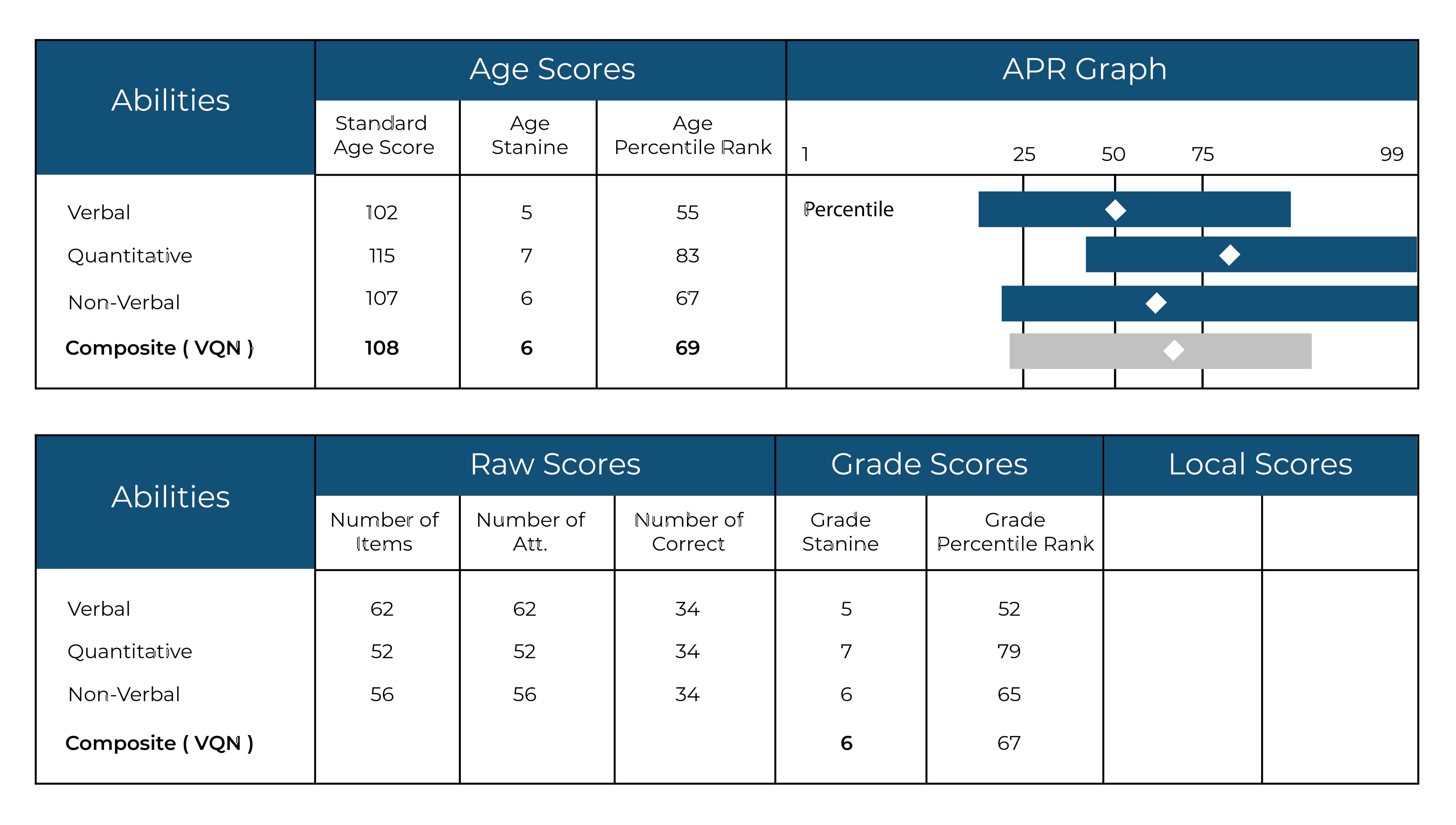What is the CogAT Test?
The Cognitive Abilities Test (CogAT), a K–12 assessment administered in groups, is designed to gauge students’ capacities for learned reasoning and problem-solving through various verbal, numerical, and nonverbal test items. The test aims to evaluate students’ acquired reasoning skills while forecasting achievement levels. The Lorge-Thorndike Intelligence Test was the test’s original name and was first released in 1954.
Each level’s number reflects the age range for which it is administered. For instance, Level 9 is intended for students who are roughly nine years old and is typically given to third-graders.
The CogAT Test is one of many assessments used in the United States to assist teachers in the following:
- Making decisions for placing students in gifted education programs.
- Evaluating a student’s academic aptitude and giftedness.
- Pinpointing skill sets, knowledge gaps, and level-appropriate lesson plans.
- Identifying students who are talented and gifted.
Individual testing is also an option if a student attends a private institution, home school, or district school that does not use this test.
The test consists of different sections, testing the students’ abilities in them, these are:
- Verbal abilities
- Quantitative abilities
- Nonverbal abilities
Also Read: CogAT with All the Important Information
How to read the CogAT Scores?
The number of correct answers a student provides on the test as a whole determines their raw score on the CogAT.
The scaled score, which is reported on a scale from 100 to 150 and takes into account the difficulty level of the questions answered, is then created from the raw score. The combined scaled scores for the verbal, quantitative, and nonverbal portions of each of the three batteries are then reported on a scale from 100 to 150, along with the composite score.
The CogAT is a norm-referenced test, which means that a student’s results are compared to those of other students who have taken the test and are the same age and grade level as them.
The percentage of students who scored lower than the student on the test is then shown along with the student’s scores as a percentile rank. For instance, a student who received a percentile rank of 90 outperformed 90% of all other test-takers.
A variety of percentile ranks make up each stanine.
The methods used to determine each child’s individual test score:
- Raw Score: This represents the total number of questions correctly answered; however, incorrect responses do not result in a point deduction from the final raw score.
- Universal Scale Score: The Raw Score is then transformed into the Universal Scale Score, a normalized standard score. The test’s verbal, nonverbal, and quantitative reasoning skills subsections (also known as “batteries”) each have their own USS scores. These three different scores are averaged to produce the Composite USS.
- Standard Age Score: The average score for the Standard Age Score is 100, with a maximum score of 160 possible.
- Percentile Rank: This figure is used by school districts to compare students in the same grade level and age range. A percentile rank of 80 indicates that the child’s score exceeded that of 80% of other test-takers. The percentile rank is 50 on average.
- Stanine: A stanine is a comprehensive, simplified score normalized for the child’s age and grade level and ranges from 1 (lowest) to 9 (highest possible).
| Stanine | Percentile Rank | Description |
| 9 | 96-99 | Very High |
| 8 | 89-95 | Above Average |
| 7 | 77-88 | Above Average |
| 6 | 60-76 | Average |
| 5 | 40-59 | Average |
| 4 | 23-39 | Average |
| 3 | 11-22 | Below Average |
| 2 | 4-10 | Below Average |
| 1 | 1-3 | Very Low |
6. CogAT Percentile Rank: The percentile rank shows the proportion of students in the same grade or age group who scored at or below your student’s level. In the 90th percentile, for instance, your child’s score is on par with or higher than 90% of students in their age group and/or grade level. Therefore, a PR of 50 is considered typical for a given age or grade level.
For each battery, students are given percentile rankings, allowing you to compare your child’s reasoning skills across the three categories. Students who score in the 98% rank or higher on the CogAT are regarded as gifted. However, smaller enrollment schools may choose their cutoff point for a gifted program. It might be lowered. The alternative is to use 98% for expert placement if they keep their gifted and talented classes small.
Age Percentile Rank Chart
This graph displays the child’s age percentile position. The diamond symbolizes the score, and a rectangle surrounds it.
The score is represented by a diamond and a rectangle represents the confidence interval.

What is a Good CogAT Score?
The answer is layered, as shown by the score types and score profile created from a student’s test results: some students may initially appear to perform worse due to a weaker overall raw score, but upon closer inspection, are discovered to be exceptionally talented in one area, and less than average in another. This indicates that the idea of a high score is nebulous, and there needs to be a set solution.
The Standard Age Score (SAS), percentile position, or even the raw score of a CogAT can be used to determine whether or not a score is considered gifted.
The precise number of points a student must receive to be accepted into each gifted program varies.
Also Read: How to prepare for the CogAT Test?
Conclusion
The CogAT is an aptitude test that evaluates a student’s verbal, nonverbal, and quantitative skills. Compared to other achievement tests, it is unique. As a result, preparing for the CogAT has many benefits. A CogAT practice test assists the student in becoming familiar with the CogAT format and question types, in addition to helping them achieve a higher CogAT score.
Students will have a better chance of being recognized for academic excellence with CogAT test preparation because most school districts use CogAT scores to identify gifted students.
At eTutorWorld, students are aided for the CogAT Test Prep in the following ways:
- To familiarize students with the structure and types of questions on the CogAT
- To assess the student’s cognitive abilities.
- Continued skill development for the student based on the evaluation.
- Provide study material based on the cognitive abilities of the student.
- Enable the student to perform at her peak level on the actual CogAT.
- Accessible prep course in the privacy and comfort of your home.
- Convenient and flexible schedules with a team of support staff available around-the-clock to assist.
eTutorWorld supports and guides students to achieve success on the CogAT. The knowledgeable tutors at eTutorWorld make sure that their students learn critical reasoning abilities and become acquainted with the actual CogAT test. Students’ confidence in taking the CogAT test is boosted due to knowing what to expect on test day.

Cynthia Thompson
Cynthia Thompson is a school teacher from North Carolina. She believes that accessibly written academic content is critical, and writes it in her unique style to educate the next generation of American school children. Read More


0 Comments